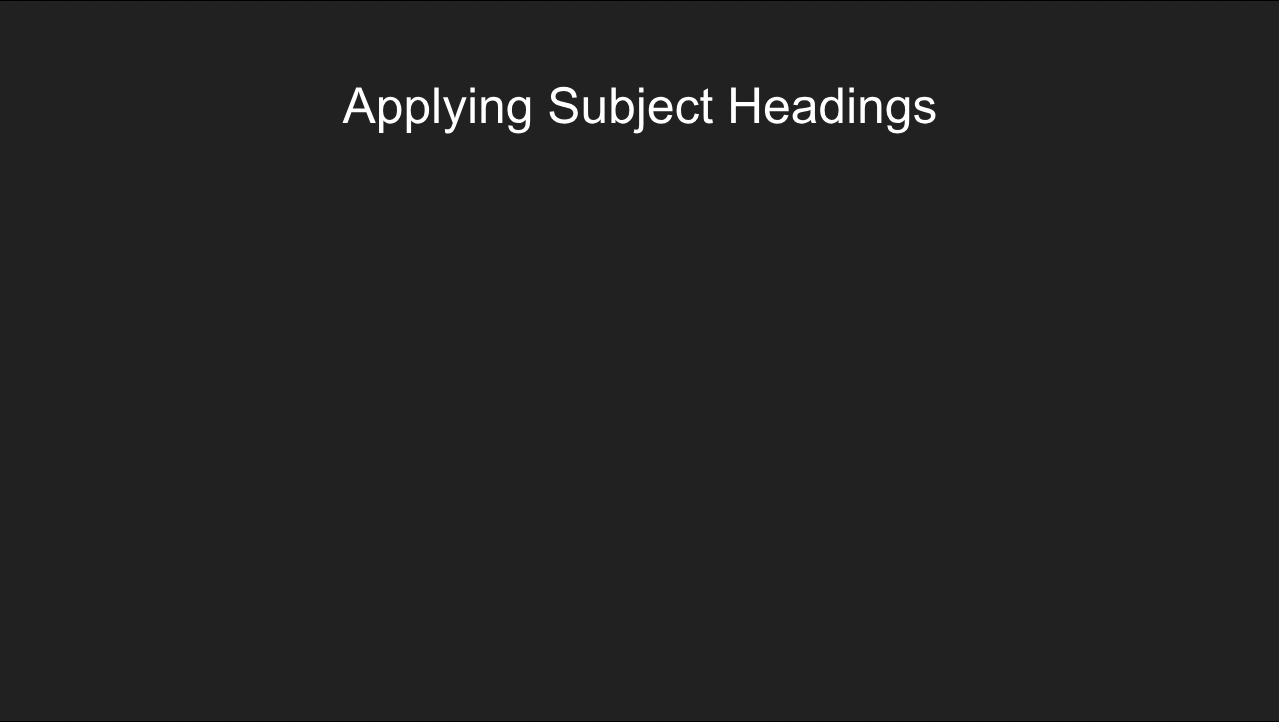|
This semester I also had the opportunity to upgrade my Academic Honesty Slide Annotation for a higher level class. This time, I wanted to explore citation in greater depth.
The core question for the upper division class was, "what do we cite?" The professor for this class is always open to me getting weird with the topics she asks me to cover, so I went full bibliography goblin for this class. We first looked at the anatomy of a citation asking what elements are always present. I introduced the WEMI model to the students to unpack how we cite in greater depth. Throughout, we used the slide annotation process to highlight the different parts of a bibliography entry to think through how we engage with the works and ideas of others in our work. And it went great! The students were really open to these new ideas and ways of thinking about the power inherent to the act of citation. They ran with and deeply explored the knowledge organization concepts I presented. I had the opportunity to present this project for the 2022 Innovative Library Classroom Conference, which you can watch here if you're interested in hearing more.
0 Comments
As part of my cataloging internship at the Federal Highway Administration Research Library through the Summer Transportation Internship Program for Diverse Groups, I wrote and presented original research on contemporary Korean collage depictions of the urban space. This combination of words might raise questions like "how was that relevant to cataloging?" and "why isn't this in the research section?" which are both completely valid. In order to make this presentation relevant to my audience (the engineers and librarians at the Turner-Fairbank Highway Research Center), I turned this paper presentation into an opportunity to give a brief orientation to Library of Congress Subject Heading and Call Number assignment. I first ran through my paper's argument to provide the necessary subject background. I kept to a very tight three minutes (out of a 10 minute presentation) for introducing myself and the paper to the audience to gesture to the experience of cataloging something with which you may not have subject expertise. I then introduced the subject headings we used in the FHWA Research Library and a selected few headings that I thought would be applicable to the paper if I were to be cataloging it as a whole work. Finally, I showed a few call number options with their meanings to point to the fact that in the vast majority of cases, a work can only live in one place in a collection.
At about the six minute mark, I opened the presentation up to discussion. I asked the people assembled if they heard anything in my description of the paper that they hadn't seen represented in the subject headings and what they thought about the differences between the two thesauruses. As the audience threw things out, I took advantage of a nearby whiteboard to write down what they were saying next to what I had presented. I closed out by guiding the conversation to highlight the human-ness of cataloging and the importance of the person assigning subject headings to the finding process. If I had had more time, I would have found a way to make the discussion more active. At the time, I had a brief daliance with the thought of going through classweb with my audience but ultimately scrapped that idea for time. With the benefit of hindsight, I would have very much liked to do a very quick think-pair-share before introducing my subjects and/or to do an opinion gradient on two of the call numbers to see which one people thought was more correct. All that said, I feel that my learning objective of "introduce the process of subject headings and call numbers" was accomplished. I got an email later that day from one of the engineers saying that he had learned a lot both about the work of art and the work of cataloging from my presentation and had really enjoyed the conversational element. To see an image of the art work at the core of my paper, click the read more. |
Interested in any of these? Use the Contact tab to be in touch!
You can also view the current state of these activities on my instruction menu: Categories
All
Archives
October 2022
|

 RSS Feed
RSS Feed
